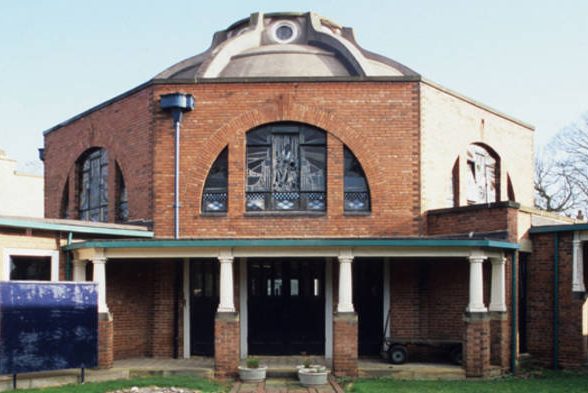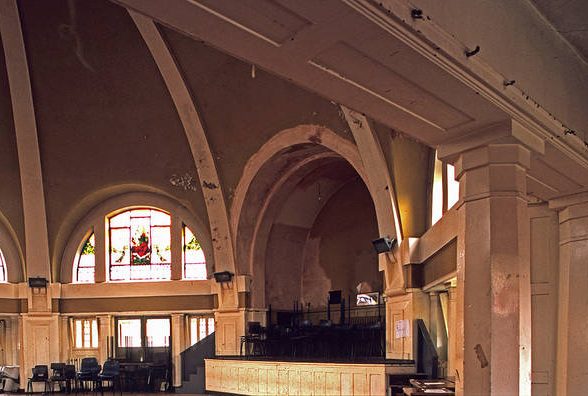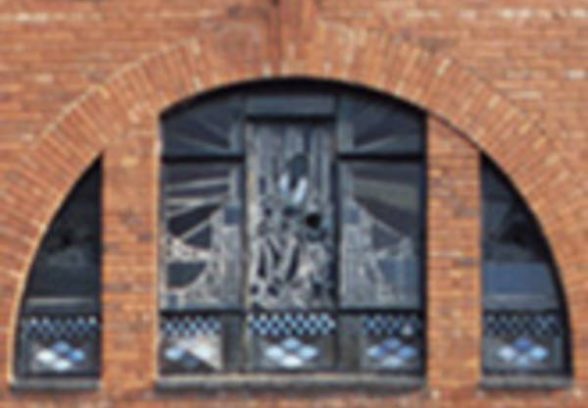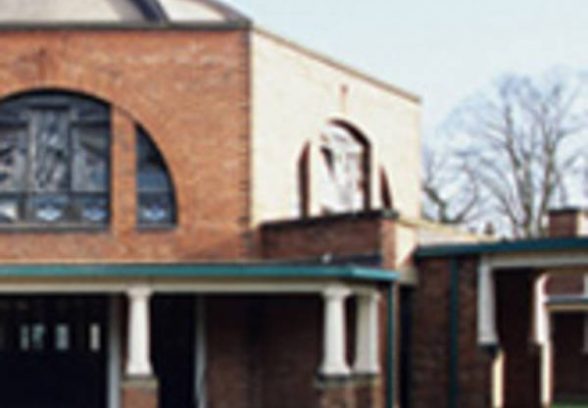This website uses cookies
This website uses cookies to enable it to function properly and to analyse how the website is used. Please click 'Close' to accept and continue using the website.






July 2009 - Ilkeston School, Derbyshire
George Henry Widdows, by Roger Mitchell
Ilkeston, overlooking the Erewash Valley in Derbyshire, has a hilltop location which gives prominence to its two tall churches found in the town centre.
On its lower western side though, the skyline is marked by the dome of a stylish and innovative school building. Ilkeston County Secondary school was opened on the 25th June 1914 by King George V on his visit to the town with Queen Mary. The ceremony involved the pressing of a button at the Town Hall some 800 yards from the school entrance where the gates were opened. An explosive charge conveyed the success of the opening to the crowds on the Market Place.
The founding of the school had its origin in the 1902 Education Act which gave LEAs the right to establish secondary schools. The school was to replace the Ilkeston Pupil Teacher Centre which had become overcrowded in its outdated buildings. D H Lawrence was its most famous student and he writes about his experiences in his novel The Rainbow.
Land for its construction was finally purchased from the Duke of Rutland in 1913 and George Henry Widdows was given the task of designing the school.
Widdows was born in Norwich on the 15 October 1871 and appointed architect to Derbyshire County Council in 1910. Prior to this appointment he had travelled widely gaining experience in Bolton, Bridgewater, York and London before his appointment in Derbyshire.
From the beginning he was something of a pioneer and his Reginald Street Baths in Derby, for example, was one of the first to be fully tiled in the country.
It was, though, his work for the County where he was responsible for some 60 Elementary and 17 Secondary schools that had the most impact. This Methodist Lay Preacher thought that schools should be healthy places for children. “Some day the Board of Education will find out that light and air are two of heaven’s greatest blessings.”
Widdows was an important member of one of a growing group of architects who thought that school design would best serve the health of the child by providing access to fresh air and exercise. From 1907 schools had become subject to regular medical inspections and this had clearly influenced the thinking. Today, the emphasis on healthy eating mirrors these attempts to improve the health of children.
It is interesting to note that before the state funding of schools, educational establishments in the main were church owned and school architecture was ecclesiastical in style.
Widdows had been appointed in Derbyshire at a time when the county was experiencing a rapid population increase. Ilkeston with its expanding coal, iron and textile industries was typical of this trend and reflected the demand for more school places.
In 1911 Widdows was suffering from work related stress and on his Doctors advice took a sea cruise to Egypt. Returning to Derbyshire it seems that his experiences clearly influenced the design of Ilkeston School which was built between 1911 and 1913.
It is a brick building, cement rendered with sandstone dressing. It has a detached octagonal hall. The most striking aspect is its large concrete dome with its 8 circular windows. The lovely tiled floors still survive in many areas along with the panelling which is a feature of the corridors and main spaces.
The delightful painted glass windows in the hall by Stodart of Nottingham still survive but the mottos in gold lettering written in Latin do not. The inscription around the inside of the hall, translated, read “But whosoever shall offend one of these little ones which believe in me, it were better for him that a millstone were hanged about his neck and drowned in the depth of the sea.” Pastoral care par excellence.
The design secured the maximum amount of sun and air into the classrooms on both sides.
The school environment in summer is sunny, light and airy, although in winter exposure to the weather is less attractive. It does though mean that pupils are in touch with the elements, which is lacking in many school buildings.
Generations of school children have walked these corridors, assembled in the hall and studied in the light-filled classrooms. There is certainly a warm feeling for this heart of the school which is a testimony to the quality of the design.
A 1913 article in The Builder states “The great work which Mr Widdows has carried out constitutes a revolution in the planning and arrangement of school buildings. It constitutes a real advance which places English School architecture without a rival in any European country or the United States.”
Ilkeston School certainly justifies its Grade 2 listing and deserves the funding that is needed to ensure its future.
Roger Mitchell was a former pupil of the school and Deputy Headteacher until 2007. He has a particular interest in history, the built environment and D H Lawrence.
Look for past Buildings of the Month by entering the name of an individual building or architect or browsing the drop down list.

Become a C20 member today and help save our modern design heritage.